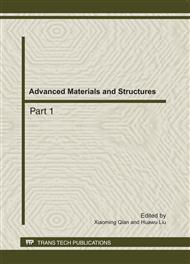p.207
p.212
p.218
p.222
p.226
p.230
p.234
p.240
p.244
Analysis of Patch Bonded Repair to Carbon Fiber Composite Laminates with Low Velocity Impact Damage
Abstract:
In this paper, low-velocity impact residual tensile strength of carbon fiber composite laminates are investigated by experiment. The triple-plate-string-element finite element model was used to calculate the strength of repaired structures of the damage. The corresponding strength tests were conducted to verify the computational results. According to the computational and experimental results, the influence of the repair parameters on the repair efficiency was analyzed, such as the overlap length and the thickness of the patch.
Info:
Periodical:
Pages:
226-229
Citation:
Online since:
September 2011
Authors:
Keywords:
Price:
Сopyright:
© 2011 Trans Tech Publications Ltd. All Rights Reserved
Share:
Citation:


